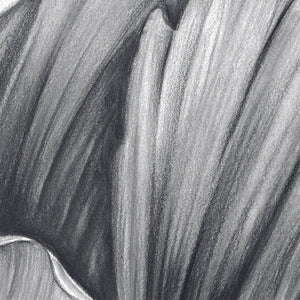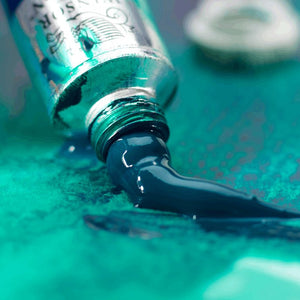Video transcript
Hi, I’m Jessie, a UK based illustrator and lettering artist, specialising in nostalgic, botanical illustration and Victorian style lettering. I have been fortunate enough to work with wonderful clients across luxury British food and drink brands.
Today I’d like to show you some drawing and lettering techniques using a variety of nib sizes from the Winsor & Newton Fineliner range. I tend to predominantly sketch first, when creating an illustration (this is great for client work if quick changes are needed, or for getting ideas on paper as fast as you can think of them.) I like to sketch on Winsor & Newton A4 cartridge paper using Winsor & Newton Graphite Pencils I’m sketching out a few rough rectangles, and quickly jotting down some basic compositional ideas. It’s nice to see them together side by side to compare and choose from. I think this top right composition works best; I’m going turn this one into the final artwork. I’m just putting down this serif ‘W’ and adding a rose vine around part of the letter. The second letter is an ‘N’, also including foliage. I’m working on Winsor & Newton Watercolour paper with a 2B graphite pencil. I’m happy with the sketch so I’ll use a Black Winsor & Newton 0.3mm fineliner to draw the letters, I’m careful to leave space for the botanical elements that I’ve already sketched out. With a 0.5 fineliner I’m creating the vines and adding the petals. Next, I’m adding some cross hatching lines with the 0.1mm fineliner this will shade the petals and add detail to the leaves. I’m block colouring the letters in with a 1mm fineliner A real bonus with these fineliners is that they contain water resistant ink and are non-fading. So, when completely dry, they won’t smudge if you’re combining with inks or waterclours. At this stage, before adding any colour. I would usually remove any pencil marks and scan in at 300dpi. This way you can experiment by adding colour both digitally or with physical inks or watercolour I hope you enjoyed this video.












![WN PWC KAREN KLUGLEIN BOTANICAL SET [FRONT]](http://www.winsornewton.com/cdn/shop/files/136444.jpg?crop=center&v=1740654068&width=20)
![WN PWC KAREN KLUGLEIN BOTANICAL SET [OPEN 2]](http://www.winsornewton.com/cdn/shop/files/136447.jpg?crop=center&v=1740654068&width=20)
![WN PWC ESSENTIAL SET [FRONT]](http://www.winsornewton.com/cdn/shop/files/137583.jpg?crop=center&v=1740762356&width=20)
![WN PWC ESSENTIAL SET [OPEN]](http://www.winsornewton.com/cdn/shop/files/137581.jpg?crop=center&v=1740762356&width=20)
![W&N GALERIA CARDBOARD SET 10X12ML [B014096] 884955097809 [FOP]](http://www.winsornewton.com/cdn/shop/files/138855.jpg?crop=center&v=1740761853&width=20)
![W&N GALERIA CARDBOARD SET 10X12ML 884955097809 [OPEN]](http://www.winsornewton.com/cdn/shop/files/138856.jpg?crop=center&v=1740761853&width=20)

![W&N PROMARKER 24PC STUDENT DESIGNER 884955043295 [FRONT]](http://www.winsornewton.com/cdn/shop/files/78674_d4d78a69-7150-4bf4-a504-3cb5304b0f80.jpg?crop=center&v=1721326116&width=20)

![W&N PROFESSIONAL WATER COLOUR TYRIAN PURPLE [SWATCH]](http://www.winsornewton.com/cdn/shop/files/136113.jpg?crop=center&v=1724423390&width=20)
![W&N WINTON OIL COLOUR [COMPOSITE] 37ML TITANIUM WHITE 094376711653](http://www.winsornewton.com/cdn/shop/files/9238_5073745e-fcfe-4fad-aab4-d631b84e4491.jpg?crop=center&v=1721326117&width=20)
![W&N WINTON OIL COLOUR [SPLODGE] TITANIUM WHITE](http://www.winsornewton.com/cdn/shop/files/131754_19b392ee-9bf6-4caf-a2eb-0356ec1c660a.jpg?crop=center&v=1721326118&width=20)